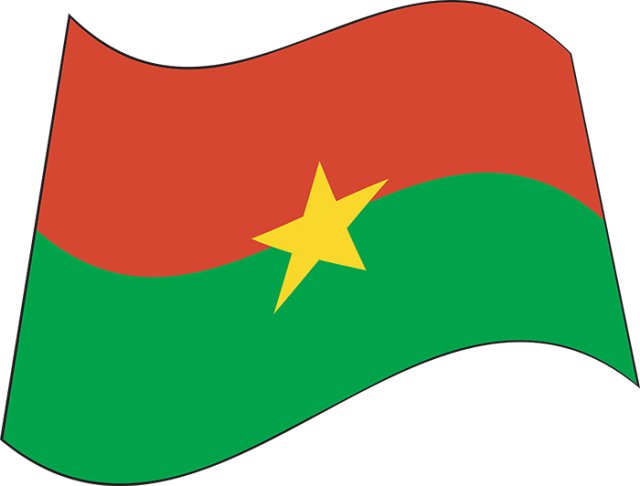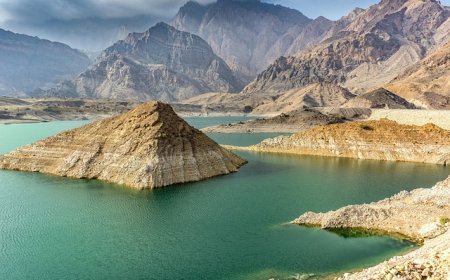Burkina Faso for Students: Geography, Culture, and History of a Resilient West African Nation
Learn about Burkina Faso’s traditions, geography, and ancient heritage in this student-focused country profile. Includes vocabulary, quiz

🌍 Introduction: A Country of Strength and Community
Burkina Faso is a landlocked country in West Africa, known for its strong communities, vibrant culture, and commitment to unity. Its name means “Land of Upright People,” reflecting values like honesty, dignity, and resilience. Although it is one of the poorest countries in the world economically, Burkina Faso is rich in music, dance, storytelling, and spiritual traditions.
The people of Burkina Faso have faced many challenges, including droughts, political instability, and poverty, but they continue to build a nation based on respect, hard work, and shared identity.
🗺️ Geography and Environment
Burkina Faso is located in the heart of West Africa, sharing borders with Mali, Niger, Benin, Togo, Ghana, and Côte d'Ivoire (Ivory Coast). The country has no coastline, and its total area is around 274,000 square kilometers (about 106,000 square miles).
The geography of Burkina Faso includes plateaus, savannas, rivers, and dry forests. The Mouhoun River (also called the Black Volta) is one of the most important water sources, especially for farming and drinking water.
The climate is tropical, with a rainy season (usually from May to October) and a dry season with hot, dusty winds known as the harmattan. In the north, the land becomes more desert-like, while the south is greener and better for growing crops.
Because rainfall can be unpredictable, many communities rely on traditional knowledge and local resources to survive in difficult conditions.
🏛️ Government, Language, and Population
Burkina Faso is officially a republic, though in recent years, the country has gone through political instability, including military coups. The country is working to restore civilian government and peace. The capital city is Ouagadougou (pronounced WAH-gah-doo-goo), which is also the country’s largest city and cultural center.
The population is around 23 million people, with many different ethnic groups. The largest group is the Mossi people, but there are also Fulani, Bobo, Lobi, Gurunsi, and others. Each group has its own language, traditions, and customs.
The official language is French, but many people speak native African languages such as Mooré (spoken by the Mossi), Dioula, and Fula. Most people follow Islam or Christianity, but traditional African religions are also widely practiced and respected.
Burkina Faso uses the West African CFA franc (XOF) as its currency.
🎭 Culture and Daily Life
Burkina Faso is known throughout Africa for its arts, music, and storytelling. Many communities rely on oral tradition to pass down history and values through folktales, proverbs, and songs. Drumming, dancing, and festivals are a vital part of life in both rural villages and city neighborhoods.
People often wear bright, colorful clothing, especially during ceremonies or celebrations. Men may wear a loose tunic called a boubou, while women wear wrappers, scarves, and beaded jewelry. Traditional clothes are often made from handwoven cotton.
Most Burkinabe families cook with simple, local ingredients. Common foods include to (a cornmeal or millet paste) served with vegetable sauce, rice, beans, and grilled meat. In cities, you can also find fried street foods like plantains, dough balls (beignets), and spicy stews.
Family and community are very important. In rural areas, people live in compounds made of clay houses with thatched roofs and work together on farms. In cities like Ouagadougou and Bobo-Dioulasso, students go to school, and artists, musicians, and filmmakers help shape modern African culture.
📜 History: From Ancient Kingdoms to Modern Nation
The land now called Burkina Faso has been home to people for thousands of years. Ancient communities farmed, traded, and created powerful societies in this part of West Africa. Around the 11th century, the Mossi Kingdoms formed and became the most powerful force in the region for several centuries. They built royal courts and warrior armies and resisted outside invasions, including the spread of Islam for many years.
In the late 1800s, France took control of the region during the Scramble for Africa. The colony was called Upper Volta, named after the nearby rivers. Burkina Faso remained under French rule until it gained independence in 1960.
The country was renamed Burkina Faso in 1984 by President Thomas Sankara, a popular leader known for promoting equality, education, and national pride. He encouraged people to grow their own food and reduce dependence on outside aid.
Although Sankara was killed in 1987, he is still remembered as a national hero. Since then, Burkina Faso has faced both political changes and efforts to build peace and democracy.
💰 Economy and Resources
Most people in Burkina Faso work in agriculture, growing millet, sorghum, maize, peanuts, and cotton. Farmers often use hand tools, and their work depends heavily on rainfall. The country exports cotton, gold, and livestock to earn money.
In recent years, gold mining has become a major industry, and Burkina Faso is now one of Africa’s top gold producers. However, not all people benefit from this wealth, and rural poverty remains a challenge.
Many people in cities work as traders, teachers, tailors, or market sellers. The government and non-profit organizations are working to improve access to education, clean water, and healthcare.
🌿 Wildlife and Natural Beauty
Although much of Burkina Faso is used for farming, the country still has wildlife parks and reserves, especially in the south and west. Animals such as antelope, monkeys, warthogs, elephants, and crocodiles can be found in protected areas.
Arli National Park and W National Park are part of a cross-border nature reserve shared with Niger and Benin. These parks help protect endangered species and provide space for eco-tourism.
Burkina Faso is also known for its dramatic rock formations, including the Domes of Fabedougou, Sindou Peaks, and Karfiguéla Waterfalls—natural wonders made of stone and water that attract visitors and inspire local legends.
📚 Vocabulary List
Word Definition
Savanna A flat grassy area with scattered trees found in Africa
Harmattan A dry, dusty wind that blows from the Sahara
Boubou A long, loose garment worn by men in West Africa
To A traditional food made from millet or corn paste
Oral tradition The passing of stories, history, or knowledge by speaking
Coup A sudden and often violent change in government
Independence The freedom of a country from foreign control
Gold mining The process of digging for gold in the earth
Artisan Someone who makes handmade goods like pottery or fabric
Plateau A flat, raised area of land that’s higher than the surrounding land
🧒 Kid-Friendly Summary
Burkina Faso is a country in West Africa where music, dance, and storytelling are part of everyday life. People live in cities and villages, grow crops, and cook meals like to and rice. The country is known for the Mossi Kingdoms, colorful clothes, and friendly people. Though it doesn’t have a beach, it has beautiful nature parks, waterfalls, and stone mountains. Burkina Faso’s name means “Land of Honest People,” and its people work hard to keep traditions alive while building a better future.
🎯 Quiz: What Do You Know About Burkina Faso?
1. What is the capital of Burkina Faso?
a) Bobo-Dioulasso
b) Ouagadougou
c) Bamako
d) Accra
2. What does “Burkina Faso” mean?
a) Land of kings
b) Land of rivers
c) Land of gold
d) Land of upright people
3. What type of music tradition is common in Burkina Faso?
a) Rock and roll
b) Opera
c) Drumming and storytelling
d) Jazz only
4. What food is commonly made from millet or corn?
a) Couscous
b) To
c) Pasta
d) Akassa
5. What natural resource has become a major part of the economy?
a) Oil
b) Cotton
c) Gold
d) Coffee


















































